StrongFirst is built upon universal strength principles that are applied to the three modalities we teach: kettlebell, barbell, and bodyweight. Although our focus is on these specific modalities, our principles can be applied to any training tool. StrongFirst principles translate complicated, scientific methods into simple, applicable programs that can be immediately applied to training. Our programming not only represents these principles, but also respects them. This respect is one of the main reasons our approach is so effective. As StrongFirst Certified Master Instructor, Pavel Macek states, “Simple programming and equipment, sinister results. The way we do it at StrongFirst.” The word principle has Latin roots meaning source, foundation, and that which comes/takes first place. The Cambridge Dictionary defines principle as “a basic idea or rule that explains or controls how something happens or works.” This deeper look at the meaning of the word emphasizes how our principles drive our culture and training systems.
Our partner, Flexible Steel, applies the same scientific, yet simple approach to flexibility training. It uses Pavel’s three main principles of power stretching known as “The Three Big S’s of Stretching.”
- Strength: Using Strength
- Space: Making Space
- Spread: Spreading the Load
Jon Engum, StrongFirst Certified Master Instructor and creator of Flexible Steel, explains that when you understand the Three S’s you can apply them beyond stretching to any movement, including martial arts or even strength training. The beautiful thing about principles, in general, is that they apply to a vast array of different fields. The exact application may differ, but the foundational idea behind it stays the same. Once you understand fundamental principles, you can apply them to basically any tool or situation. The intent of this article is to take Pavel’s “Third S” (spreading the load) and explore how it applies to strength training.
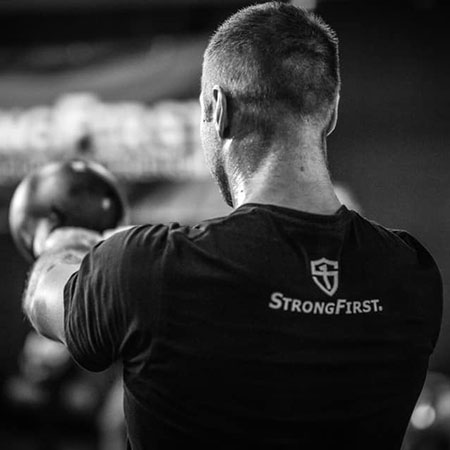
Spreading The Load for Strength
In his book Flexible Steel—An Insider´s Guide to Ultimate Flexibility, Jon Engum describes “spreading the load” in the following way:
“…the third S is for Spread. As in spread the load. Instead of trying to twist and turn or move from one spot or one joint, try to spread the movement over as many joints and muscles as possible, taking up slack where you can. If you gain a little bit here and a little bit there, it adds up to huge gains.”
This is exactly our goal in strength training when completing full-body lifts. We are trying to distribute the load throughout our entire body by involving as many muscles and joints as possible to move the weight. Instead of focusing on contracting a single muscle or moving one joint by itself, we are using our body as a unit to access the greatest amount of strength. As the strength legend Earle Liederman observed in his book Secrets of Strength:
“A ‘Strong Man’ when performing a feat which requires a great expenditure of strength, will instinctively bring into action as many muscles as possible. Since all of his muscles are strong he can exert extraordinary power by making his muscle act in concert.”
Let´s take the deadlift and the bench press as an example and see how this idea can be applied.
The Deadlift
During our deadlift setup, before lifting the weight, we want to “wedge” ourselves between the floor and the weight. To achieve this, we need to move our hips to the right height. If your hips are too low, you are gripping the bar with just your arms with very little tension in your posterior chain. Hips that are too high will make your arms as loose as ropes and make your hamstrings feel like they are about to tear. When you feel the load equally distributed throughout your whole body, you know you have found the right hip height. As Brett Jones, StrongFirst Director of Education and StrongFirst Certified Master Instructor, states, “It should feel as if you are ‘compressing’ it like a coiled spring ready to explode.”

The Bench Press
To move a heavy weight in the bench press, you need a solid and strong connection with the floor. Your feet must be firmly planted so that the legs can properly push into the ground like two pillars providing a strong base. This also helps you to set up and maintain the lateral arch that Pavel describes in his article, “The Lateral Arch: A Secret Weapon for a Big Bench Press.” Your planted feet generate force from the ground up, which gets transferred through an arched body and packed shoulders into the bar. Learning how to use your body as a unit through strength training can also be applied outside of the gym. It will enable you to do the same thing when lifting or moving heavy objects in every-day life. As Dr. Stuart McGill says, “[It is] an equalization of strength throughout the body that you can use in real life.”
Strength has a greater purpose.
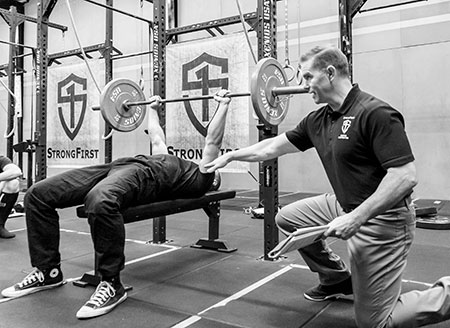
Spreading the Load to Prevent Injuries
“Spreading the load” also fits the emphasis StrongFirst places on safety and performance. These are seen as two sides of the same coin, rather than two mutually exclusive things. In his article “Tension is a beautiful thing,” Dr. Michael Hartle, StrongFirst Certified Master Instructor, writes that “the tension is needed to improve your performance but also decrease the chance of injury during loaded movements.“ Properly creating tension in our body to maximize strength in a given lift has the positive side effect of preventing smaller muscles and structures from getting over-used and injured (see “Five Energy Leaks to Plug so Your Strength Gains Flow” by former StrongFirst Certified Team Leader, Denzel Allen). Joints must be centered and stabilized so that the prime movers (the big muscles responsible for moving a joint) can generate force in the most advantageous way. Without the necessary tension to maintain the joint position, your alignment will break down and the generated force will not properly transfer throughout the body. You will compensate by using smaller, weaker muscles to move a weight and put undue strain on joints, tendons, and ligaments. Over time, this will lead to pain and overuse injuries.
A prime example of this is shrugging the shoulders during a pullup. When people aren´t engaging or using their lats properly to keep the shoulders in position, they start pulling from the elbows and neck. Not only does this waste potential strength by not allowing lat contraction, but you also put too much strain on smaller muscles like the brachioradialis and brachialis (two of the three main muscles that flex the elbow). The neck and the extensor muscles of your forearm attempt to make up for the lack of lat activation. Over time, this can lead to conditions like tennis elbow, biceps tendinitis, and issues with the neck and cervical spine.
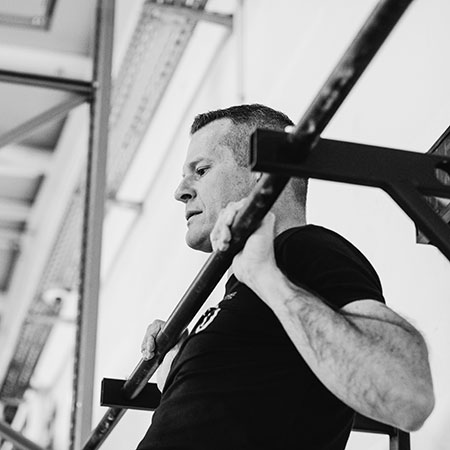
Spreading the Load for Assessment
Training for the Sinister Challenge taught me how soreness and local fatigue can be used as movement assessment. After I completed my first failed attempt (reaching 97 of 100 swings) my hamstrings were severely sore. After watching my video, Pavel Macek, StrongFirst Certified Master Instructor, told me that I was putting too much strain on the back of my legs and recommended I change my technique slightly. He wanted me to bend my knees a little more, just enough to distribute some of the load from my hamstrings to my quads. The improvement was immediate and during the following training sessions, not only did my hamstrings not fatigue as fast, but engaging my quads added additional power to my swings. Through this, I learned an important lesson: during compound movements, excessive soreness or the local fatigue of a single muscle after training can be a sign of overuse and improper distribution of the load throughout the body. An awareness of this can supply valuable feedback, indicating where your technique is lacking, and provide an opportunity to improve the performance and execution of the specific exercise.
Learn the Rules, Break the Rules
As with everything, there are exceptions to the rule of “spreading the load.” When you become proficient in the basics of strength training and have built a solid foundation, there are certain situations and reasons for targeting specific muscles or parts of the body. Strength is an example of this. At some point in your lifting career, you´ll discover a weak link in your main lifts. To progress further, you need to address them. This is best done by using what we call “specialized variety exercises” which are variations of the main lift with a local focus to target a specific muscular or technical weakness. Paused squats, for example, are a great way to strengthen the bottom position of a squat as well as initiate a strong ascent with proper posture.
Hypertrophy training is another example. There is nothing wrong with looking strong as long as your muscles are as strong as they look. Building “body amour” can go a long way in contact sports or other rough situations you may encounter in life. But instead of using the common bodybuilding approach of focusing on single muscles, we use an approach that utilizes movement patterns and so-called “development exercises” that have a localized effect on select muscle groups. For example, the Romanian deadlift to target the hamstrings or the close grip bench press to focus on the triceps.
And the last situation that allows for “breaking the rules” is the need for both strength and resilience. We call this “in between” strength taught at our professional seminar, StrongFirst RESILIENT. This type of training fills in the gaps of the main lifts. Life is unpredictable and so are the situations and postures in which you may find yourself for a physically demanding task. There can also be unforeseen physical strain in various sports. Strengthening awkward, disadvantageous positions purposefully and in a controlled manner through variations of exercises that look “unhealthy” can prevent injury. As Dr. Mell Siff says, “[It is] injury prevention by imperfect training.”
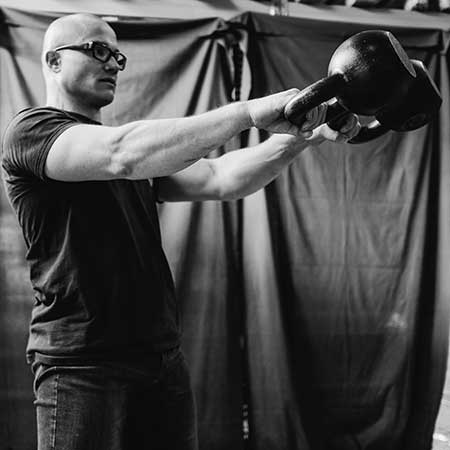
Conclusion
We are StrongFirst—the School of Strength. Our training principles are designed to develop strength in a safe, effective way. “Spreading the load” is just one of our principles that can be applied to strength training. If you are interested in learning more, there are several opportunities to do so. Plan Strong™ is an exclusive seminar on a sophisticated and powerful strength training system. It is distilled into a tight “how to” package on creating individualized strength programs for athletes at any level. At Built Strong, you will learn about hypertrophy training, according to the principles of Plan Strong, and how to create a unique system for gaining muscle and strength across multiple areas, lifts, and movement patterns. StrongFirst RESILIENT, mentioned above, instructs you how to develop “in between” strength and improve your readiness for sport’s and life’s unpredictable situations. We provide the tools, but the execution falls to you. In the wise words of Bruce Lee, “Knowing is not enough, we must apply. Willing is not enough, we must do.” It is your job to put these words into action. Train, practice, and implement these principles in your training and programming and observe their effectiveness. Strength is a skill and, as any skill, there is space to learn and improve. A skill is never mastered, it is only increased through dedication, practice, and patience.
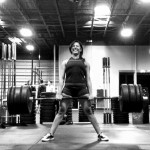


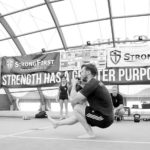
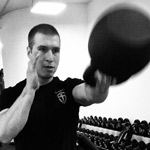

Great article written by a great coach!
See you soon Sven!
🤟🏻😉
Great article! Succinct, and a nice mix of general and specific. Thanks.
Outstanding article Sven. Thank you!